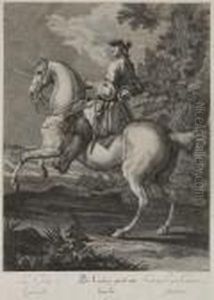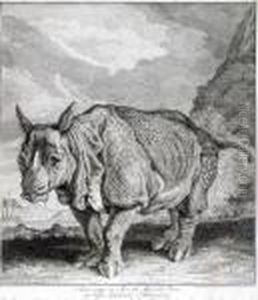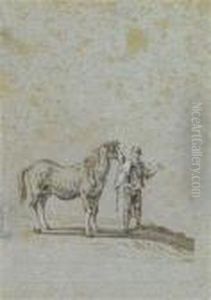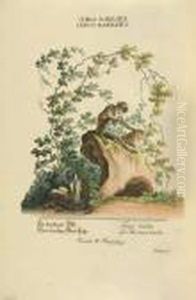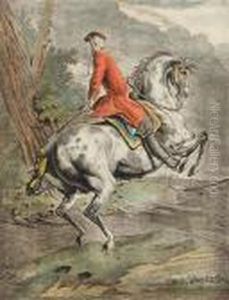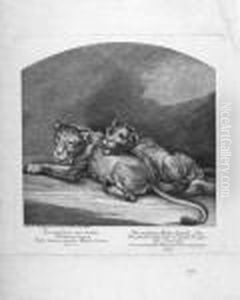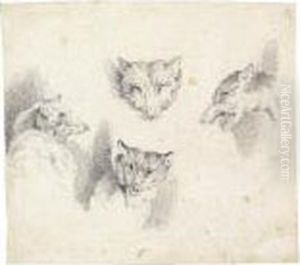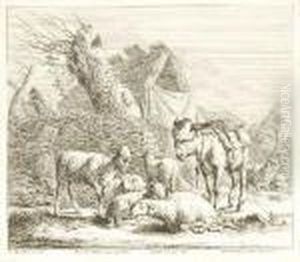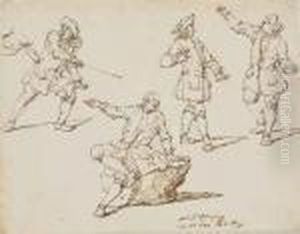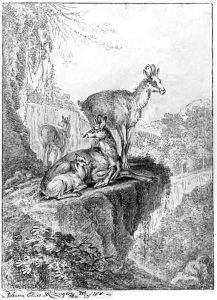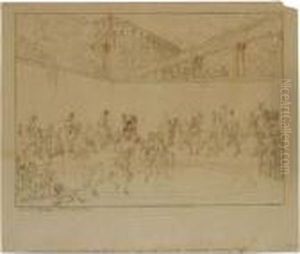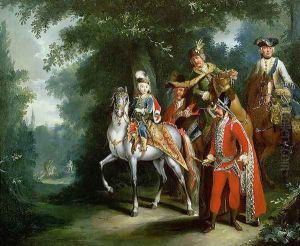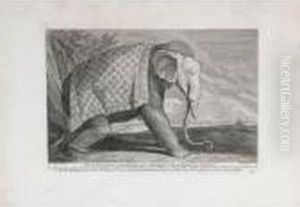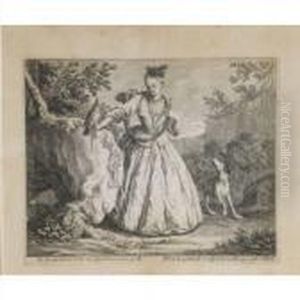Johann Elias Ridinger or Riedinger Paintings
Johann Elias Ridinger (sometimes spelled Riedinger) was a notable German painter, engraver, draughtsman, and publisher known for his works that primarily focused on animals and hunting scenes. Born on February 16, 1698, in Ulm, Ridinger was apprenticed to the Ulm painter Christoph Resch and later learned engraving from the Augsburg engraver Georg Philipp Rugendas. Ridinger’s early exposure to engraving and painting laid the foundation for his future career and style.
Ridinger moved to Augsburg in 1717, where he studied under the painter and engraver Johann Falch. His talent for capturing the anatomy and movement of animals was evident from the beginning, and his work soon began to gain recognition. He established his own publishing house in Augsburg, which allowed him to produce and distribute his works widely.
Throughout his career, Ridinger created a vast number of etchings, engravings, and mezzotints. His art depicted an array of subjects, including hunting scenes, equestrian portraits, and studies of wild and domestic animals. One of his most famous series is the 'Representation of the Most Famous Deer Hunts,' which showcases his masterful representation of the power and grace of these animals in motion.
Ridinger's work not only reflects a high level of artistic skill but also offers insight into the 18th-century fascination with the natural world and the nobility's passion for hunting. His animal studies are considered to be some of the most accurate and sensitive of the period, contributing significantly to the scientific and artistic understanding of wildlife.
As an artist, Ridinger was influenced by the Baroque style, and his work is characterized by dynamic composition and a keen eye for detail. His ability to depict the texture of fur and the muscularity of animals has been particularly praised.
Johann Elias Ridinger passed away on April 10, 1767, in Augsburg. His legacy endures through his prolific output of prints and drawings, which continue to be collected and admired for their artistic quality and historical value. Ridinger's works are held in numerous collections and museums around the world, and he remains a respected figure in the field of animal and hunt-related art.
